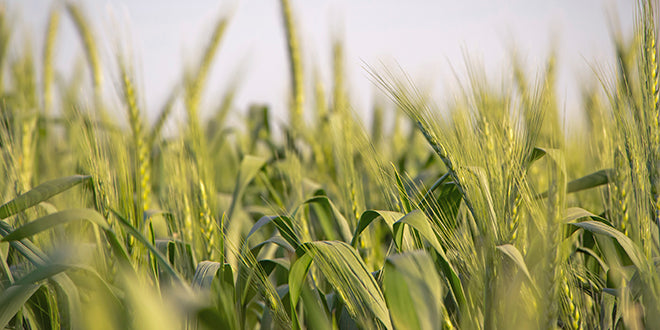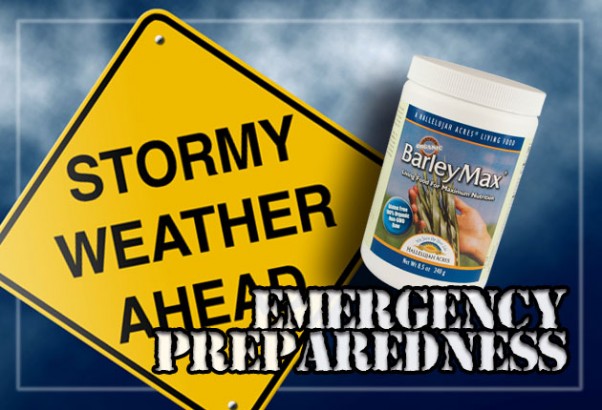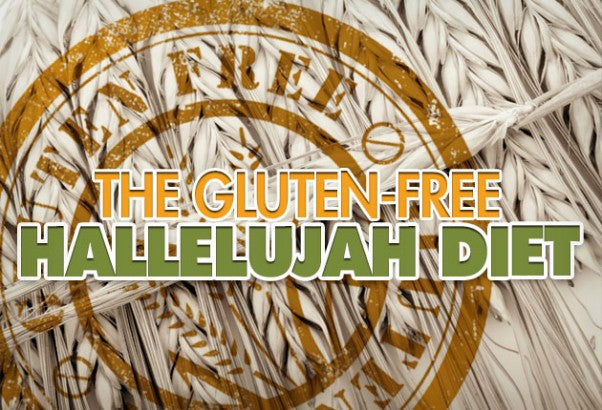Could you have a gluten sensitivity and not know it? Ann Malkmus did! Gluten is an elastic-like protein that is found in wheat, barley, rye and many other sources. Ann Malkmus, Hallelujah Acres Chief of Education, is one of millions of people who is now avoiding gluten as much as possible. Watch the video to discover how Ann figured out that gluten was the source for her health challenges — and how you can know if gluten is affecting you.
“There are more than 250 symptoms that people can have as a result of eating gluten,” Ann says. “Fortunately I don’t have that many symptoms, but I notice that things aren’t quite right when I eat gluten.” One of the issues Ann experiences is thyroid malfunction, which makes sense because gluten sensitivity is directly correlated with thyroid issues. In fact, hormones can become imbalanced if a person has sensitivity to gluten. “Another thing I found out is that if you have a gluten issue, you might as well take a look to see if you have any candida,” Ann adds. “Those two things fall hand-in-glove! Now, everyone’s symptoms are different, but when I have gluten issues, I get intestinal bloating and weight gain, in addition to the hormone issues. But I never really understood why it was all happening.”
So what happens if Ann just decided to eat a gluten-containing muffin one day? “All it takes for me to start having symptoms is a small piece of bread — not even a whole muffin!” she says. “Even a whole-grain, Hallelujah Diet-friendly piece of bread will make a major difference in my body.” Celiac disease (which Ann does not have – only about 1% of the population has celiac disease) is not the same as having a gluten sensitivity. Experts estimate that 1 in 10 people in America may have a gluten sensitivity; some say even 1 in 5! The difference between celiac disease and a gluten sensitivity is that people with celiac disease have some very strong, even life-threatening reactions to gluten. Gluten sensitivities are much harder to pinpoint. Only when people start having strange, immune-system issues are questions raised, and even then, pinpointing the cause as gluten sensitivity is often overlooked.
But why the sudden increase in gluten sensitivity? People have been eating grains for thousands of years, so why are problems emerging? “It’s a strange phenomenon,” Ann says. “Even people in their 70s who have been eating bread all their lives are now having gluten sensitivities.” The problem is demand for specialty breads and other processed foods. This has inadvertently created a massive increase in the amount of gluten in certain grains, not to mention the sheer overabundance of gluten in processed foods. In fact, most of us don’t realize how much gluten we are eating on a day to day basis. “Whether it’s the pasta, the crackers, the breads, people are eating a lot more gluten than they used to,” Ann says. “Not to mention, our immune systems are being bombarded by so many other factors, that they are wearing down. The average person’s immune system is at the point that any amount of gluten has the potential to cause negative issues.” Since 80% of a person's immune system resides in the gut — where gluten does its damage — immune issues are commonly associated with gluten sensitivity. Gluten sensitivity tests are in development, but the best way to determine if you are sensitive to gluten is an elimination diet — that is, eliminate as many sources of gluten from your life as possible and monitor your health along the way. It sounds simple enough but there are more sources of gluten other than just foods. Postage stamps and envelopes contain gluten, so do cosmetics; it takes a bit of homework.
After going gluten free as much as possible for 3 months, try re-introducing gluten again. If you start having strange symptoms like bloating, weight gain, or a re-occurrence of symptoms you had before the elimination diet, you know that gluten is the culprit. Still, if after 3 months, you’re still craving breads, there are many good tasting, gluten free products on the market. Or, you can try making your own, like Ann did. “I’m making my own gluten free muffins and breads. No, they don’t look like store-bought breads and muffins, nor do they taste the same. But if you really want some good, home-made breads to munch on, they’ll do the trick,” Ann says.
There are some really good bread recipes in a great recipe book we offer at Hallelujah Acres, called “Everyday Gluten Free,” involving things like brown rice flour, sorghum flour, and corn meal. You can also make flour-free, gluten free bread by sprouting rice and millet and putting the grains in a blender.
What’s your favorite gluten free recipe? Scroll below the related articles to comment!







